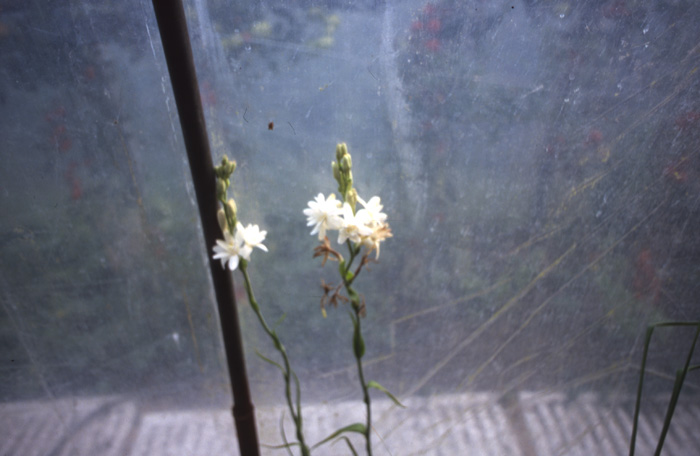You may not know the name and few grow this sumptuously perfumed greenhouse plant, which is odd as it is so gorgeously scented. Polianthes tuberosa bulbs are commercially available though strangely seldom sell many. Though heirloom varieties are known the only named variety you will commonly find is an old favourite The Pearl. Most closely resembling the finest gardenia in perfume and somewhat in the blooms this delightful gem, originally from Mexico, has been grown by discerning gardeners since Tudor times. It became much more popular with the introduction of glass and hot houses which made it’s culture much easier.

During the Victorian period it became almost mandatory to grow these especially for cutting. Polianthes has a similar habit to gladioli reproducing through small offsets, thus to get a succession of blooms year after year you’re best off buying new stock annually. Which is as with many other members of it’s Amaryllis family, though do not let me put you off trying to grow up the little offsets into flowering size bulbs (which are in fact tuberous rootstocks) it’s just neither quick nor easy.
However if you simply purchase new bulbs in winter you can start them off in succession from February till May and then obtain a continuity of flowering right through summer and autumn. Plant each bulb in a six inch pot or several in a bigger planter, rather shallowly so the neck and shoulder protrude. Use free draining gritty compost liberally enriched with leaf mould.
Start the bulbs into growth with warmth and grow them on in only modest warmth and never hot. They can be grown, reluctantly, in quite cool conditions but must be kept at least frost free. Be careful never to waterlog their compost, keep them just moist and don’t water from above. They need little if any feeding- this being better done whilst building up the bulblets to flowering size, though a little liquid feed weekly may help if their compost proves weak. Once the bulbs have made strong roots and plenty of long leaves are showing you can encourage them into bloom by moving them to warmer conditions, though still preferably never much above 70 degrees Fahrenheit.
Like gardenias they prefer a tropical jungle glade position with cool warmth and bright dappled shade. When they flower you get up to a dozen creamy white, thick fleshy petalled blooms borne atop a long stem about two foot / 0.6 metre tall which makes them exceptionally handy for cutting- if you can spare them, I prefer to leave most of mine perfuming the greenhouse. If you have a warm sunny spot outdoors by a patio or oft opened window you could chance planting some out for the summer- again be sure to set them only part buried.


